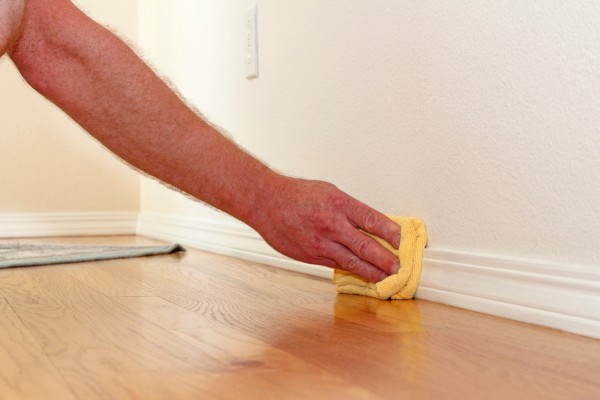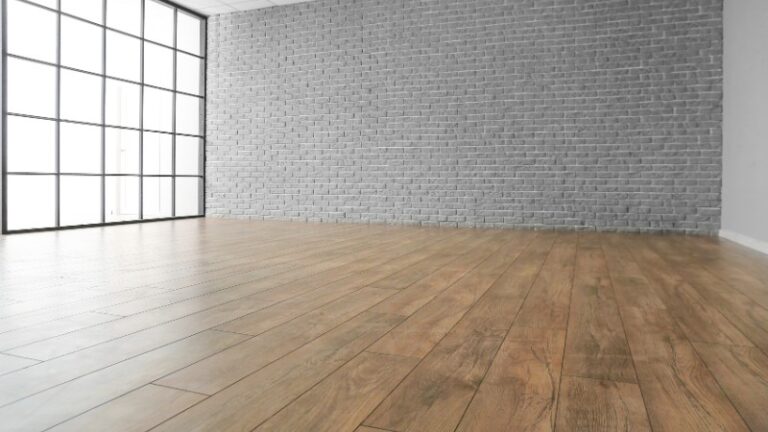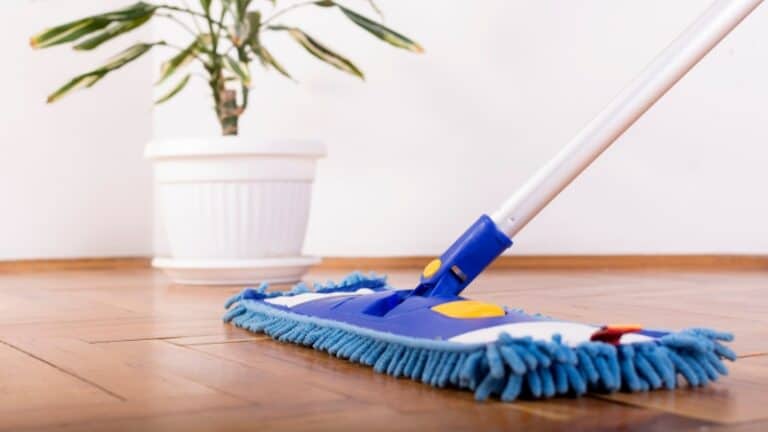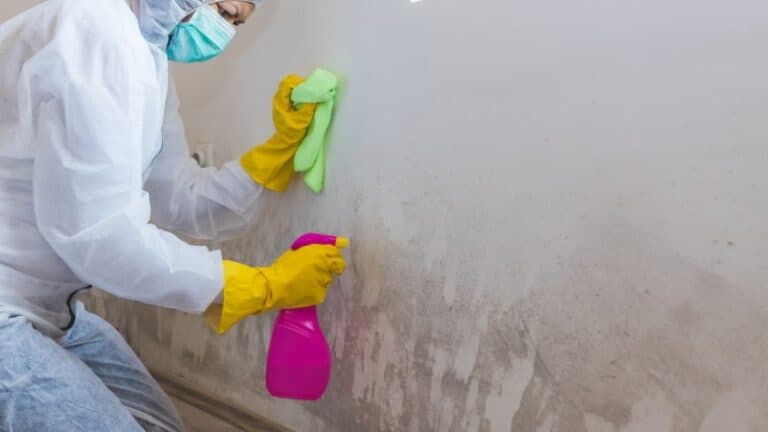There’s something oddly nostalgic about the scent of an old house — until it starts to cling to your clothes, furniture, and peace of mind. That musty air? It’s not just in your head. It’s often a mix of trapped moisture, dust buildup, mildew growth, and the quiet history embedded in wood floors, soft furnishings, and all the walls.
Unfortunately, the older the home, the more likely it is to trap odors thanks to poor ventilation, damp areas, or years of tobacco smoke and pet odors. And while a quick spritz of air freshener might offer a short-term fix, it won’t touch the real source.
According to the EPA, indoor air can be two to five times more polluted than outdoor air—and in some cases, up to 100 times more. That’s not just bad news for your nose; it’s a serious issue for your indoor air quality.
So, how do you get rid of that old house smell for good? Let’s get into it.
Content
- 1 Why Does My Old House Have a Smell?
- 2 7 Effective Ways to Get Rid of Old House Smell
- 2.1 1. Deep Clean All Fabrics and Upholstery
- 2.2 2. Use Baking Soda and Vinegar to Absorb Odors
- 2.3 3. Clean Air Vents and Replace HVAC Filters
- 2.4 4. Let in Fresh Air and Use Cross-Ventilation
- 2.5 5. Scrub Walls, Baseboards, and Cabinets
- 2.6 6. Deodorize and Deep Clean Floors
- 2.7 7. Use Natural Odor Neutralizers
- 3 Say Goodbye to Musty Smells — Book a Deep Clean with Modern Maids
Why Does My Old House Have a Smell?

Old houses have charm, but they also come with a unique set of atmospheric quirks and most of them are less than delightful for your nose. If you’ve ever stepped into an older home and noticed a musty smell lingering in the air, you’re not alone.
There are a few common culprits behind that distinct scent, and it often boils down to three main conditions: low ventilation, excess humidity, and a lack of natural light.
The core of that musty odor is often tied to microbial volatile organic compounds (MVOCs). These are gases released by mold as it grows — not the most pleasant houseguests.
Mold spores thrive in places that trap moisture and offer little airflow, like dark basements, crawl spaces, or behind old bathroom tiles. And since many older homes weren’t built with today’s air circulation standards in mind, these compounds can stick around longer than they should.
Then there’s the issue of time. Over the years, everything from paint and drywall to wooden beams and insulation can absorb bad smells. It’s like your home has been quietly collecting every cooking session, leaky pipe, or wet umbrella that ever passed through.
As the house “breathes,” it slowly releases those old smells right back into your living space.
Poor ventilation is another heavy hitter. Many older properties still rely on outdated HVAC systems, or worse, have windows that haven’t been opened in decades. Without a steady supply of fresh air, odors — from mildew growth to tobacco smoke — tend to linger and intensify, especially in rooms that are rarely used.
Speaking of which, sealed-off areas like guest bedrooms, attics, or storage closets can start to develop a stale, almost sour smell over time. When air gets stuck, moisture builds up, and any existing pet odors or perfume traces from the previous homeowner tend to resurface often unexpectedly.
Dust buildup plays a quieter but equally important role. It might seem harmless, but layers of dust in baseboards, air ducts, or ceiling fans can trap everything from cooking grease to pet dander. Over time, this mix creates a stale indoor environment that no scented candle can truly fix.
In older homes, it’s rarely just one factor; it’s the combination of years of use, environmental exposure, and limited airflow. Whether it’s lingering pet smells embedded in old carpets or mildew hiding under wallpaper, these smells don’t appear overnight, and they certainly won’t disappear without a little effort.
And as the EPA has pointed out, indoor air quality can be significantly worse than outdoor air — sometimes more than 100 times worse. So if your home has been around the block a few decades, it’s worth evaluating what might be silently affecting your air.
7 Effective Ways to Get Rid of Old House Smell
1. Deep Clean All Fabrics and Upholstery

Old smells love soft spots. If your home still carries that stubborn old house smell, chances are your fabrics are part of the problem. Upholstery, curtains, rugs, and even throw pillows quietly soak up years of pet odors, tobacco smoke, and everyday mustiness, especially in homes with high humidity or poor ventilation.
Start with the easy wins: wash what you can. Toss machine-safe items like curtains and cushion covers into the laundry using hot water and an odor-neutralizing detergent.
For larger, non-washable pieces like sofas or area rugs, sprinkle a mix of baking soda and a few drops of essential oils—lavender and citrus are great options. Let it sit for about 20 minutes before vacuuming everything thoroughly.
This helps absorb odors naturally and leaves a light, clean scent behind.
For deeper smells embedded in carpet padding or upholstery foam, steam cleaning is your go-to solution. Choose a steam cleaner with HEPA filtration to remove dust buildup and musty particles effectively.
If the smell lingers even after a good clean, it might be time to consider professional deep cleaning. Persistent odors could be a sign of hidden bacteria or mildew.
Also, let in the sunlight. Natural light has disinfecting properties, and opening your windows not only boosts air circulation but helps dry out damp areas and brighten up the entire room. Fresh air and a little UV exposure can make a noticeable difference.
Regular fabric care is key to keeping house odors under control. Once you clean the core culprits, your living space will feel lighter, fresher, and more inviting—without relying on artificial sprays to hide what’s underneath.
2. Use Baking Soda and Vinegar to Absorb Odors

When it feels like your old house is clinging to a scent that just won’t budge, the solution might already be in your kitchen. Baking soda and vinegar are simple, natural tools that don’t just cover up foul odors—they break them down at the source.
Baking soda works by neutralizing acidic compounds found in musty air, pet odors, and even that faint scent of mildew growth.
Just pour some into shallow bowls and place them strategically around the house like inside closets, under sinks, behind bulky furniture, and in those dark basement corners where air circulation is minimal. Over a few days, it’ll quietly absorb bad smells and help refresh the air without any artificial fragrances.
White vinegar offers a different but equally powerful effect. Add it to bowls or mix a 1:1 ratio with water in a spray bottle, then lightly mist odor-prone areas. Let it sit with the windows closed for 24 to 48 hours. As it evaporates, vinegar helps neutralize airborne particles causing that stale, old smell.
And no, your home won’t end up smelling like a salad—vinegar’s strong scent fades quickly, leaving the space much fresher.
Just a heads-up: keep baking soda and vinegar separate for this task. While they’re a dream team for cleaning, using them together here will cancel out their odor-fighting powers.
For rooms that stay damp or struggle with humidity level like basements or bathrooms, consider tossing in a few activated charcoal pouches too. They’re excellent at absorbing moisture and trapping odor-causing particles, making them a solid backup for those tougher areas.
This natural approach is especially effective in sealed or poorly ventilated spaces where house smells tend to hang around. It’s a low-effort, high-reward strategy for anyone looking to reclaim their home’s freshness without harsh chemicals.
3. Clean Air Vents and Replace HVAC Filters

Sometimes, the musty smell in your home isn’t coming from what’s inside the room; it’s what’s blowing through it. If your vents are recycling air filled with dust, mold spores, or pet hair, you’re not just spreading odors, you’re breathing them in.
Air ducts and filters act like the lungs of your home. When they’re clogged or neglected, stale air lingers, and foul odors become part of your everyday atmosphere.
Start by removing vent covers and using a vacuum hose to clear out any visible dust buildup. Then, wipe down the grilles with a microfiber cloth and a mild disinfectant to keep them free of residue and airborne grime.
Next, check your HVAC filters. If they’re older than 60–90 days, it’s time for a replacement. Homes with pets, allergies, or high humidity levels may even need more frequent changes to maintain indoor air quality.
A dirty filter trap odors and it recirculates them with every blast of air.
For a subtle improvement in scent, you can add a drop or two of essential oil to your new filter before installing it. Just be careful not to overdo it; the goal is to freshen the air, not overwhelm it.
If odors persist despite these efforts, your air ducts may be the hidden culprit. Over time, they can trap moisture, dust, and even mold growth. In these cases, professional duct cleaning can help eliminate musty air and restore proper ventilation throughout your home.
And it’s not just about smell. According to air quality experts, indoor pollutants—including odor compounds—can affect your comfort, trigger allergies, and in some cases, cause more serious health effects. That’s why regular HVAC maintenance isn’t just part of a cleaning routine; it’s a safeguard for your home’s air and your health.
4. Let in Fresh Air and Use Cross-Ventilation

If your home feels like it’s holding its breath, it probably is. Stale, trapped air is a major contributor to that old house smell, and without proper airflow, even the cleanest rooms can start to feel heavy and musty.
One of the simplest ways to freshen up your living space is by creating cross-ventilation. Open windows on opposite sides of the house to allow outside air to flow in while stale indoor air flows out. To speed things up, place a fan near an open window or doorway to actively draw in fresh air or push musty air outside.
Just 30 minutes a day can make a noticeable difference, especially when paired with a regular cleaning and maintenance routine.
This technique is especially effective after using vinegar treatments or tackling a deep cleaning session. It helps clear out lingering moisture and airborne particles, including those microbial volatile organic compounds that often fuel a musty odor.
Humidity plays a huge role, too. Mold and mildew thrive in damp, unventilated spaces. Ideally, indoor humidity should stay between 30% and 50%. If it creeps higher, especially in basements or older bathrooms, it’s worth investing in a hygrometer to monitor levels and a dehumidifier to keep things in check.
And while you’re letting in the breeze, don’t forget the basics; add window screens or mesh coverings to keep pollen, dust, and insects from slipping in with the fresh air.
For long-term odor control, consider using an air purifier specifically designed to neutralize odors. Models with activated charcoal or HEPA filters help remove musty air, volatile organic compounds, and even pet odors, giving your home a noticeable boost in freshness.
5. Scrub Walls, Baseboards, and Cabinets

Ever feel like no matter how much you clean, your house still smells… old?
That lingering odor might be coming from the walls themselves. Over time, painted surfaces, wood cabinetry, and even baseboards soak up everything from cooking grease to tobacco smoke, especially in homes that have gone years with minimal ventilation.
These surfaces may look clean, but they quietly trap musty odors and stale air particles. To tackle this head-on, mix up a simple DIY cleaning solution: combine 2 cups of warm water with a tablespoon each of dish soap and vinegar. Use a soft cloth or sponge to gently scrub all the walls, starting from the top down.
Don’t skip corners, thresholds, or baseboards—these often-overlooked spots are where dust buildup and pet odors love to hide.
Cabinets, especially those in the kitchen, deserve extra attention. Wipe down both the inside and outside, including drawer tracks and shelf liners, which often trap smells from old food or spilled liquids. After scrubbing, rinse with clean water and dry with a microfiber towel to prevent mildew growth.
For painted walls, always test a small hidden patch before applying vinegar-based solutions across larger areas. Some finishes may be more sensitive than others.
If you’re dealing with sticky residue, dark staining, or smells that just won’t quit, it might be time to call in a pro. A deep cleaning service like Modern Maids can step in with specialized degreasers and wall-safe treatments to restore freshness without damaging your home’s surfaces.
When you clean beyond what’s visible, you’re not just refreshing the look of your home—you’re helping eliminate musty smells at the source and creating a cleaner, more inviting atmosphere.
6. Deodorize and Deep Clean Floors

If you’ve ever walked into a freshly cleaned room that still somehow smells… off, your floors might be the sneaky culprit. While they’re underfoot and often overlooked, flooring, especially in older homes, can absorb and trap odors just as easily as upholstery or drapes.
Start with the basics: sweep or vacuum thoroughly, especially around baseboards and under heavy furniture. Dust buildup and food crumbs may seem harmless, but over time, they mix with moisture and contribute to that stale, musty air.
When mopping hard surfaces like wood or laminate, use an odor-neutralizing cleaner and not a waxy or overly perfumed one, which only masks the issue and may even trap more grime.
For carpeted areas, go a step further. Enzyme-based cleaners are especially effective at breaking down organic materials like pet urine or food spills that traditional carpet shampoos often fail to eliminate.
While shampoos may leave carpets smelling pleasant at first, they don’t always neutralize the source of the odor, meaning the smell eventually creeps back.
Steam cleaning is another powerful method for deep odor removal. It lifts residue that has settled into carpet fibers or padding and helps eliminate allergens that contribute to poor indoor air quality. If odors persist or if the original source is a mystery, it may be time to bring in professional help.
Don’t skip the baseboards and flooring edges during your routine. These spots quietly collect dust, hair, and moisture, perfect conditions for mildew growth and long-term smells.
Modern Maids’ deep cleaning services are designed to target these overlooked areas, using advanced equipment and odor-fighting solutions that leave your floors and air noticeably fresher.
7. Use Natural Odor Neutralizers

Even after a full deep clean, some smells have a way of creeping back in. That’s where natural odor neutralizers come in handy, not just as a final touch, but as quiet guardians that keep your home smelling fresh day after day.
Think of these tools as your behind-the-scenes allies. Charcoal bags, baking soda sachets, coffee grounds, and essential oil diffusers work subtly but effectively to absorb odors and freshen the air without introducing harsh chemicals.
They’re safe for kids, pets, and even those sensitive to synthetic scents.
Charcoal bags, in particular, are superstars for hidden spaces. Tuck them inside closets, behind appliances, or under sinks; anywhere that tends to trap moisture or air. To keep them working at their best, place them in direct sunlight every 30 to 60 days to “recharge” their odor-absorbing power.
Baking soda sachets or small bowls of coffee grounds also do a great job absorbing household odors, especially in enclosed areas like drawers or pantries. They don’t just mask the smell—they help neutralize it.
And for a light, consistent scent throughout your living space, essential oil diffusers are a great option. Oils with natural antimicrobial properties not only smell great, but also help purify the air. Some of the best essential oils for odor control include:
- Lemon – Bright and clean; great for kitchens
- Eucalyptus – Refreshing and excellent for neutralizing musty air
- Tea Tree – Known for antifungal properties
- Lavender – Calming and effective for bedrooms or living areas
While these natural solutions can’t replace deep cleaning or proper ventilation, they’re ideal for maintaining a fresh smelling home between cleanings. Think of them as your home’s low-maintenance defense system that is always working in the background to keep house odors at bay.
Say Goodbye to Musty Smells — Book a Deep Clean with Modern Maids
Let’s be honest: getting rid of that old house smell takes more than cracking a window or lighting a candle. It calls for a top-to-bottom refresh—fabrics, floors, vents, cabinets, the works. Because when odors have been hiding out for years, a surface wipe just won’t cut it.
The good news? These natural methods can breathe new life into any space, whether you’re moving into a vintage gem, reviving a rental, or just tired of mystery smells haunting your hallway. But if scrubbing baseboards and steam-cleaning carpets isn’t your idea of a relaxing weekend, you don’t have to go it alone.
Modern Maids brings serious cleaning power to homes in Dallas and Austin. Our deep cleaning pros know exactly where old smells like to hide—and how to send them packing. We’ll handle the dirty work so you can come home to air that actually smells like… nothing at all.
Call (469)-430-8860 or book your service online today. One clean and it’ll feel like a whole new house.







